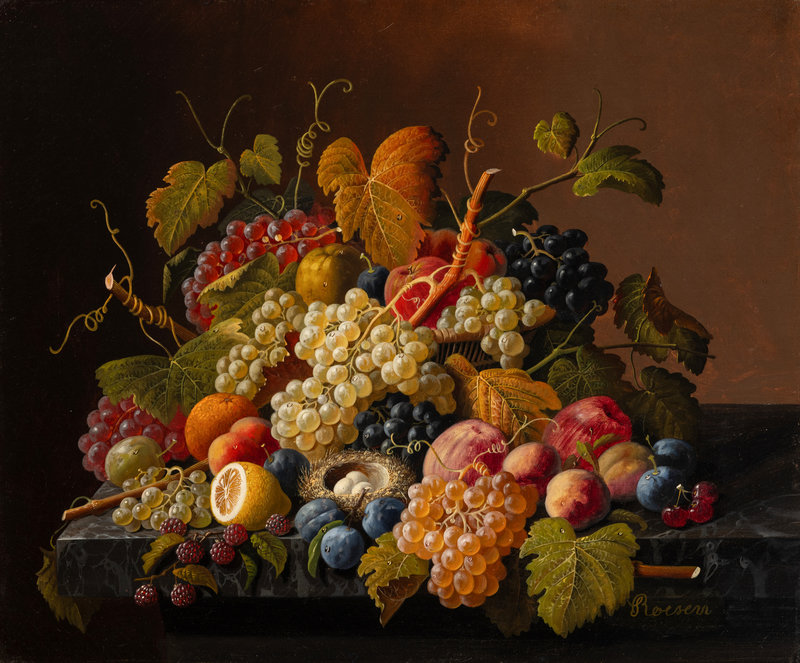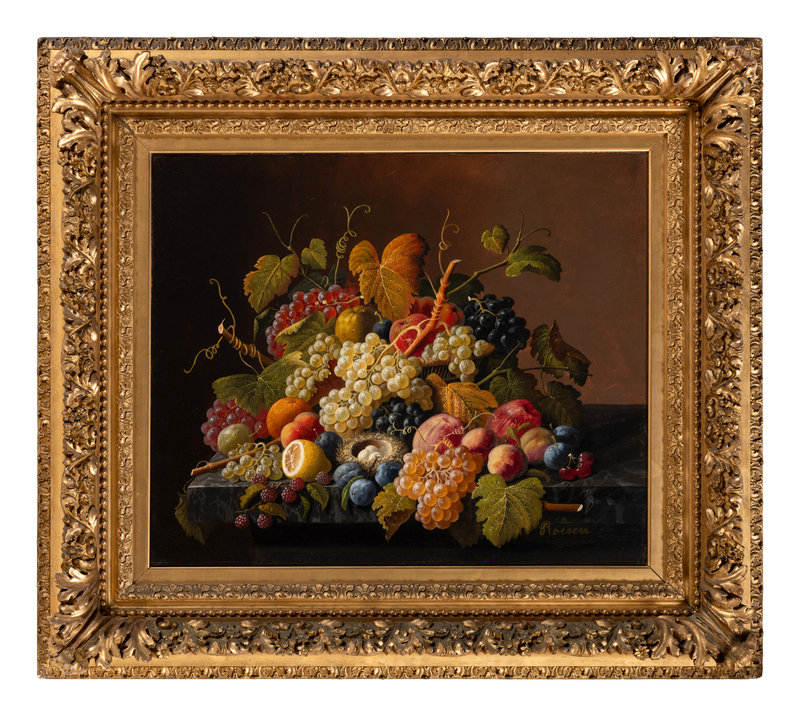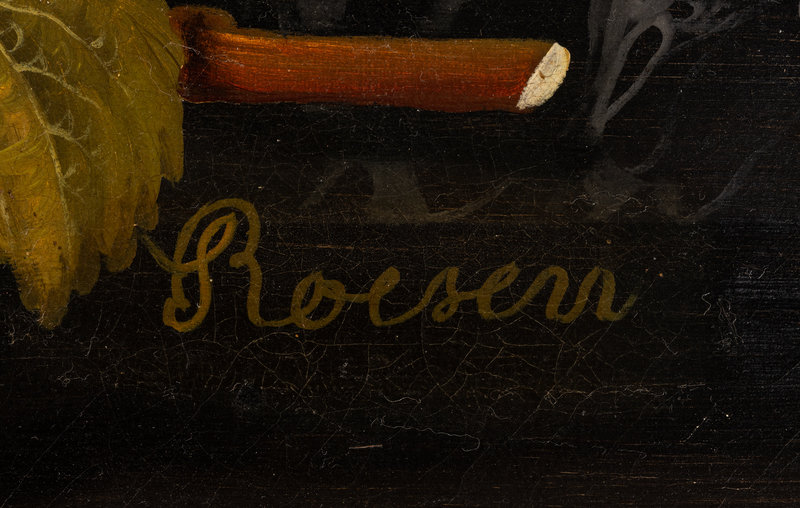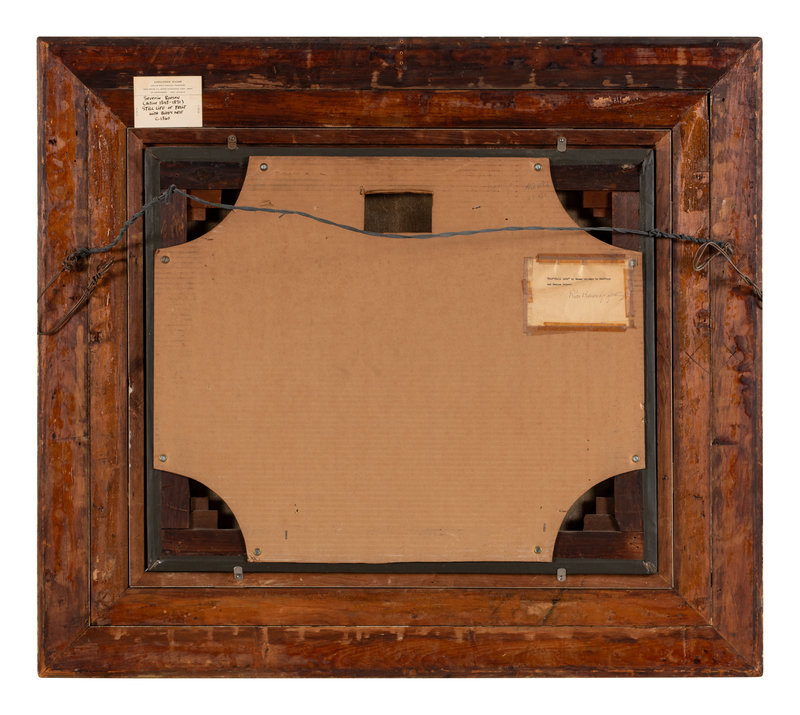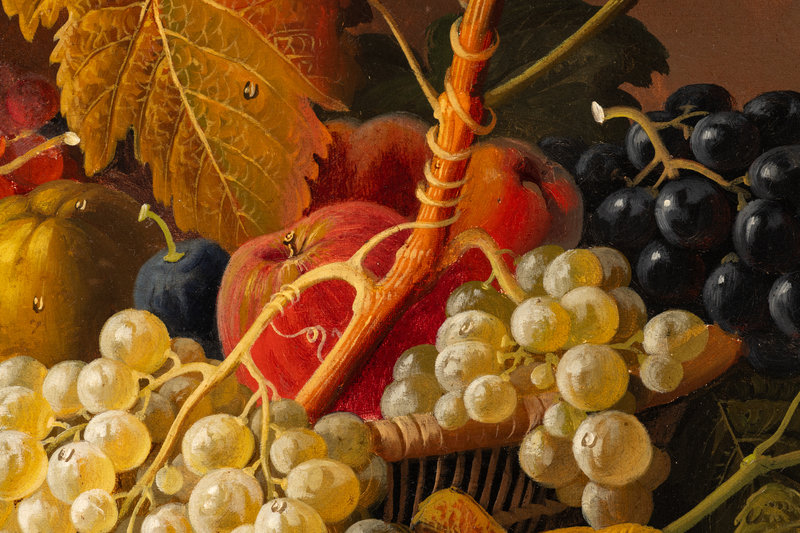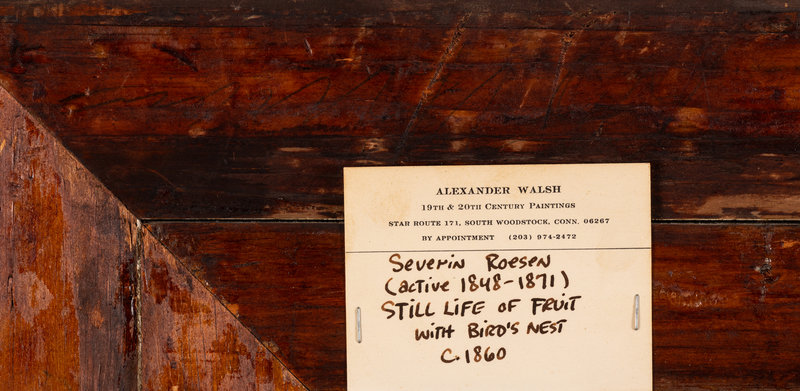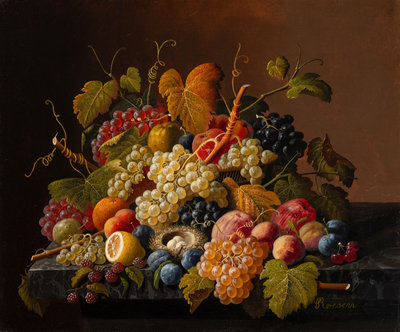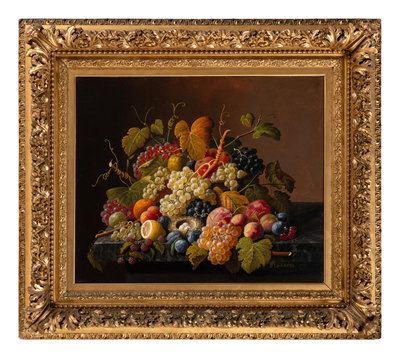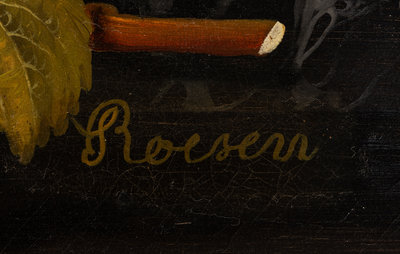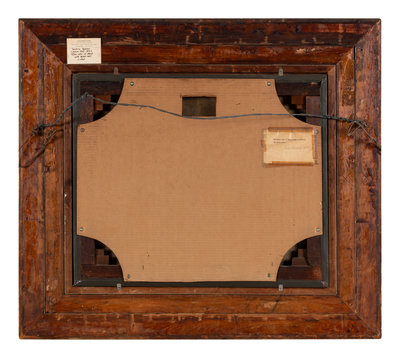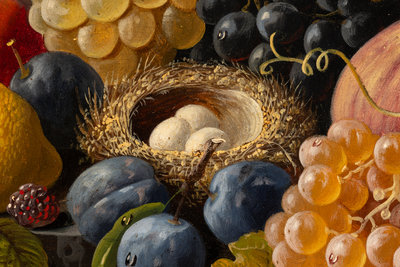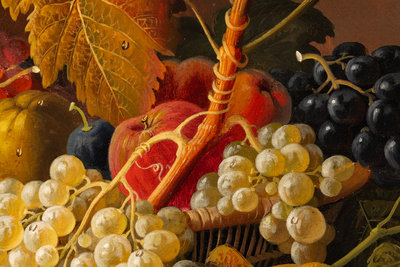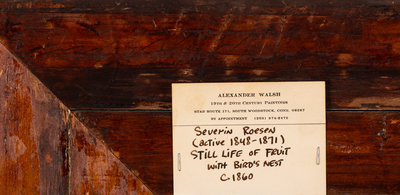Condition Report
Contact Information
Auction Specialists
Lot 8
Severin Roesen
(American/German, 1848-1872)
Still Life of Fruit with Bird's Nest, c. 1860-70
Sale 1283 - Canvas & Clay: The Collection of Judith and Philip Sieg, Bellefonte, Pennsylvania
Oct 26, 2023
10:00AM ET
Live / New York
Own a similar item?
Estimate
$15,000 -
25,000
Price Realized
$47,250
Sold prices are inclusive of Buyer’s Premium
Lot Description
Severin Roesen
signed Roesen (lower right)
25 x 30 inches.
The Collection of Philip and Judith Sieg, Bellefonte, Pennsylvania
(American/German, 1848-1872)
Still Life of Fruit with Bird's Nest, c. 1860-70
oil on canvas
signed Roesen (lower right)
25 x 30 inches.
The Collection of Philip and Judith Sieg, Bellefonte, Pennsylvania
